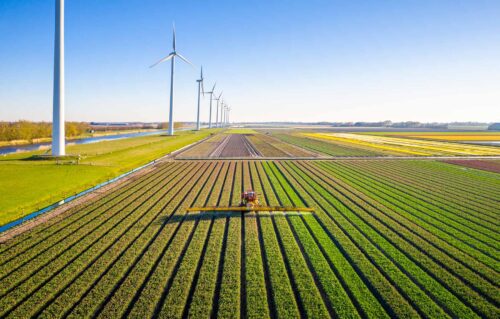
Report | 2024
Toward a Shared Zero-Carbon Energy Future
A Global Analysis of Rural Energy Cooperatives
Rural areas, with their abundant renewable energy resources, are experiencing an unprecedented energy transition opportunity, driven by the narrowing window to tackle climate change and the global consensus on the steadfast pursuit of renewable energy development. Rural energy transition shows great potential to address long-standing challenges of energy access and affordability for rural communities and small-scale farmers, and to reduce the energy-related health risks for the 2.4 billion people who still rely on traditional fuels for cooking and heating.
However, throughout the energy transition process, the interplay of technical, financial, and organizational barriers has historically marginalized rural communities, limiting their participation in decision-making and benefit-sharing. Over time, this lack of local involvement can weaken the sustainability of energy projects and exacerbate social and economic disparities. Therefore, an equitable rural energy transition is crucial for expanding access to reliable, clean, and affordable energy, driving local economic growth, and building more resilient and prosperous rural communities.
Community energy models, exemplified by rural energy cooperatives, are playing a key role in accelerating the clean energy transition across many countries. In anticipation of the upcoming 2025 International Year of Cooperatives, this report explores the role of cooperatives as a collaborative model and an emerging player in the energy market. Based on global case studies, it provides an overview of rural energy cooperatives, illustrating various financing, profit, and benefit-distribution models, assessing their environmental, economic, and social impacts, and summarizing current trends and challenges facing their development.

This report also highlights the potential of rural energy cooperatives in driving energy transition and innovation. By tapping into local resources, cooperatives enable energy production and consumption by local communities, reducing reliance on external supplies and ensuring equitable benefit-sharing. The collaborative model and people-centered approach can expedite the transformation from a centralized energy system to one that is decentralized, participatory, and low carbon.
Additionally, the report discusses how we can innovate institutional frameworks and leverage multiple mechanisms to accelerate the rural energy transition. Ultimately, we hope this analysis offers a fresh perspective for countries and regions rapidly deploying distributed renewable energy, particularly China and other developing countries, focusing on encouraging local engagement, boosting local economies, enhancing well-being, and driving rural revitalization.